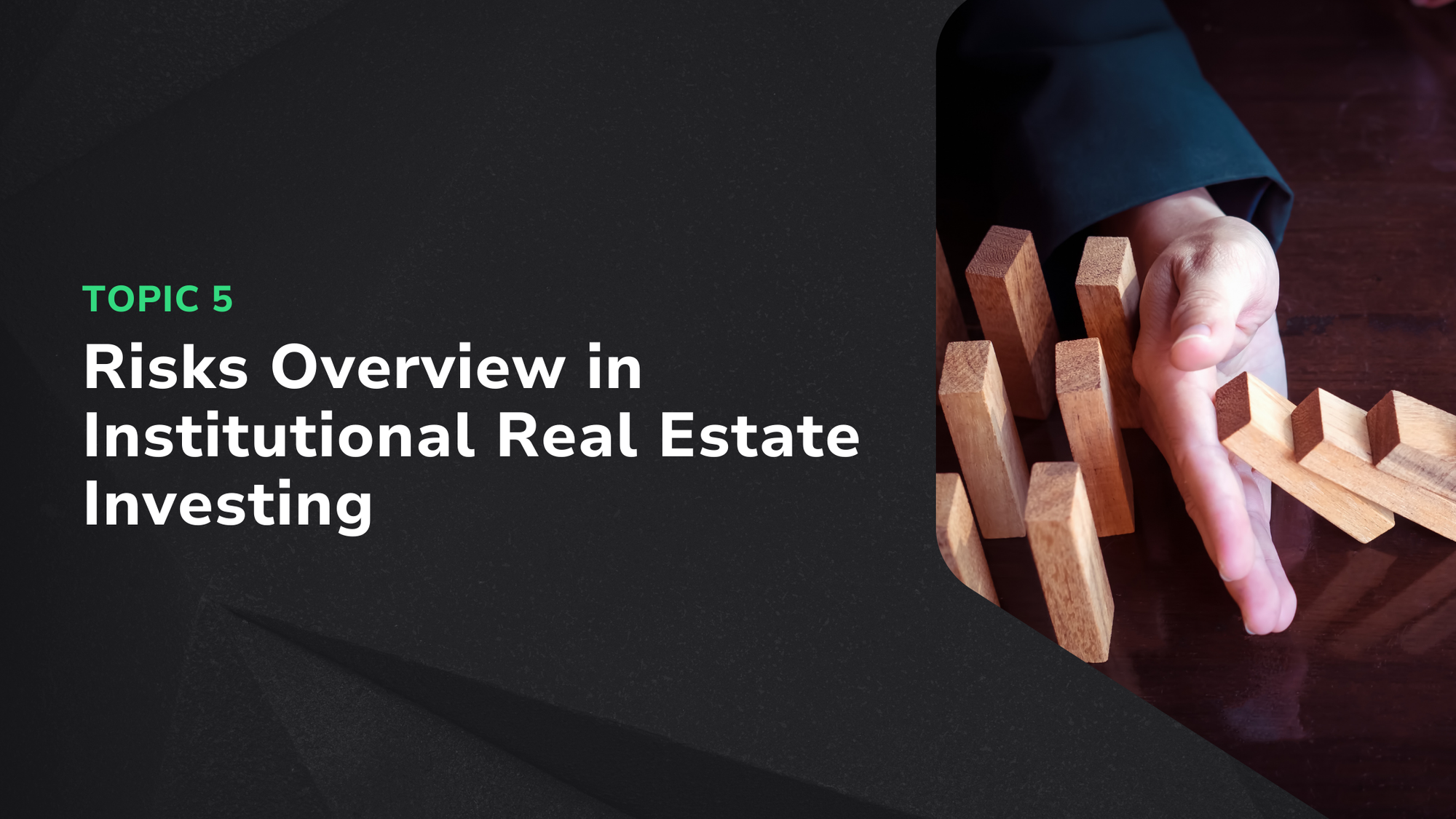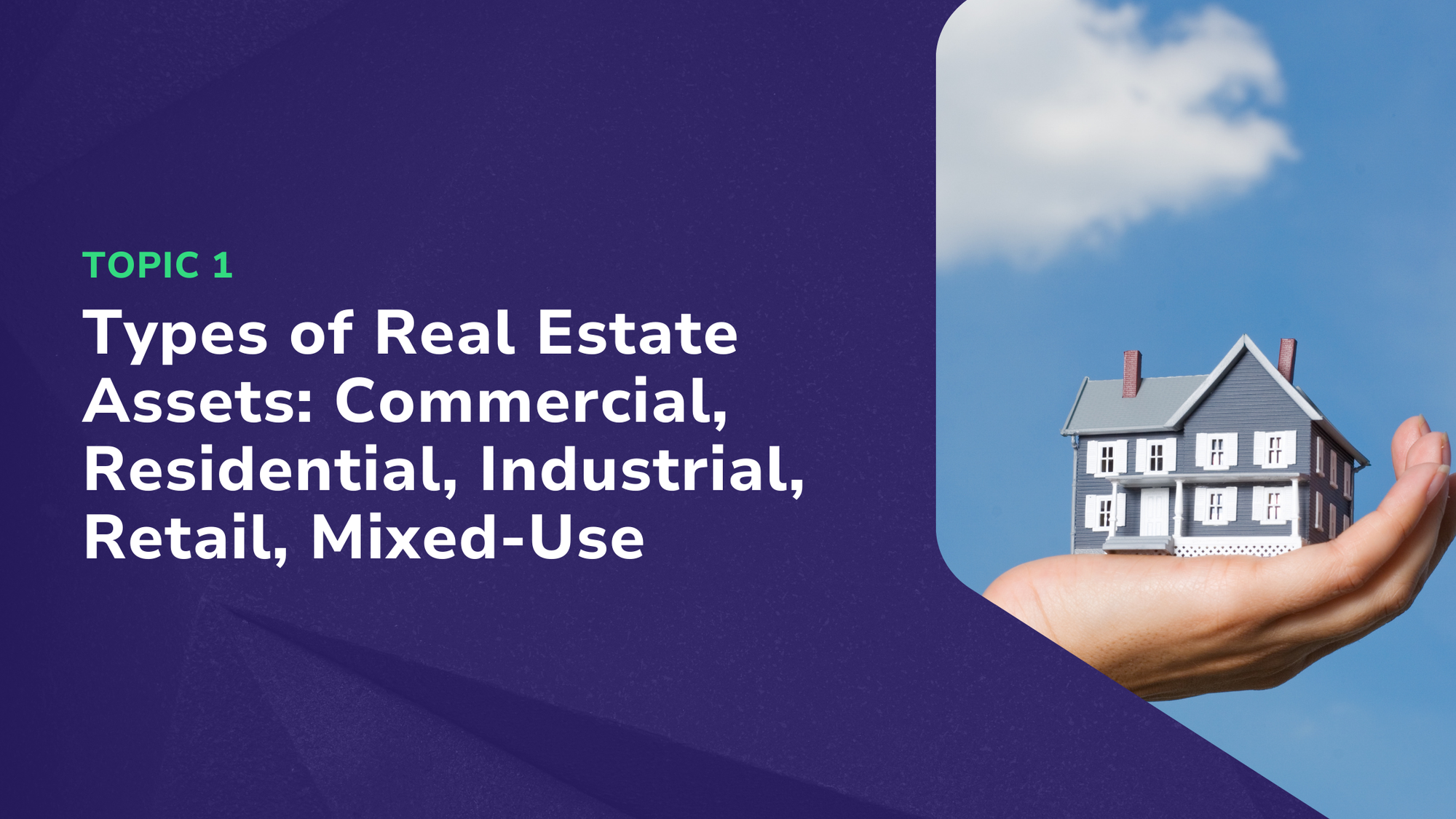Risks Overview in Institutional Real Estate Investing
Learn the main risks in institutional real estate investing, from market volatility to tenant defaults, and how investors can manage them effectively.

Introduction
Institutional real estate investing offers compelling benefits like stability, diversification, and professional management, but like all investments, it comes with risks. From market downturns to tenant challenges, understanding these risks is crucial for making informed decisions and building a resilient portfolio.
By knowing what can go wrong, investors can prepare strategies to mitigate potential losses while still capturing the rewards of institutional-grade assets.
1. Market Risk
Market risk refers to the possibility that property values or rental income will decline due to economic conditions, interest rate changes, or shifts in demand.
Examples:
- Economic recessions reducing rental demand.
- Rising interest rates lowering property valuations.
- Oversupply of commercial space in a specific region.
2. Tenant & Occupancy Risk
Even prime properties can face cash flow issues if tenants default, fail to renew leases, or vacate early.
Examples:
- A multinational downsizing and leaving a large office space.
- Retail tenants struggling due to e-commerce growth.
3. Liquidity Risk
Institutional real estate is generally less liquid than publicly traded securities. It may take months or even years to sell an asset or exit a fund.
Examples:
- Economic uncertainty delaying asset sales.
- Limited buyers for niche property types.
4. Financing & Leverage Risk
Using debt (leverage) can boost returns but also amplifies losses during downturns.
Examples:
- Rising interest rates increasing debt servicing costs.
- Breaching loan covenants leading to refinancing challenges.
5. Regulatory & Political Risk
Changes in government policies, taxes, or zoning laws can directly affect real estate investments.
Examples:
- New property cooling measures in Singapore.
- Foreign ownership restrictions in certain countries.
6. Operational & Management Risk
Even institutional-grade properties require expert management to maximise returns and maintain asset quality. Poor management can erode value.
Examples:
- Inefficient property maintenance increasing costs.
- Poor tenant relationship management leading to high turnover.
7. Environmental & ESG Risk
Environmental issues or failure to meet ESG (Environmental, Social, Governance) standards can hurt asset value and limit tenant interest.
Examples:
- Properties failing to meet green building standards.
- Flood risk in certain geographies.
How RealVantage Addresses These Risks
At RealVantage, we take a multi-layered approach to risk management:
- Thorough Due Diligence — Market analysis, tenant vetting, and financial stress testing.
- Diversification — Deals across multiple geographies and sectors.
- Professional Management — Partnering with experienced operators for optimal performance.
By combining institutional rigour with accessibility, we help investors participate confidently in large-scale real estate opportunities.
Next in the Series
📖 Read next: Types of Real Estate Assets: Commercial, Residential, Industrial, Retail, Mixed-Use — Explore the different asset classes and their investment potential.
Disclaimer
This article is for informational purposes only and does not constitute investment advice. All investments carry risks, including the potential loss of capital. Past performance is not indicative of future results. Investors should conduct their own due diligence and seek professional advice before making investment decisions.


